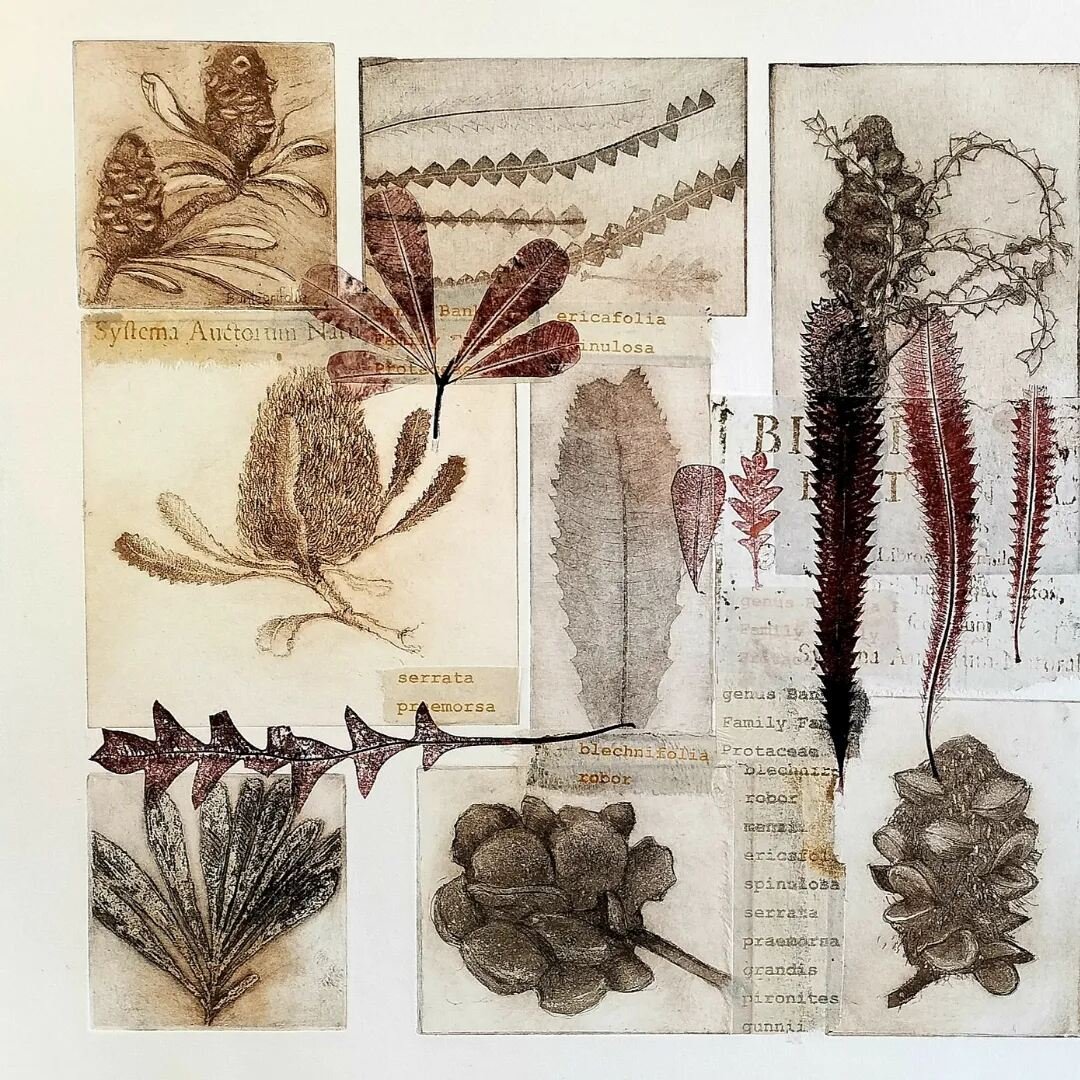
Etching
Etching is a means of incising lines in a metal plate with acid for printing in the intaglio technique.
The plate is first covered with an acid resistant ground (wax or bitumen), through which the artist scratches a design with a stylus or needle, revealing the bare metal below. This plate is then immersed in an acid bath that cuts the incised lines into the plate. Etched lines often betray the subtle motions of the artist's fingertips. The longer the plate is left in the acid the darker the image will appear when printed.
After the image is finished being etched, ink is wiped onto the plate. The plate is buffed down to remove excess ink and damp paper is placed on the plate. This is then passed through a hand-press under extreme pressure. The paper is literally forced into the small lines that have been etched into the plate. The ink that was in the grooves becomes the image on the paper. Other techniques such as aquatint and spit bite are used to produce variations in line and tone.
Etchings by Jo
Jo's exquisite etchings are made on copper or zinc plate. One picture is often made up of multiple plates and printed using the best quality German etching paper. Jo enjoys the unexpected results achieved by the intermixing of colours on the paper. She also sometimes mixes colour on the one plate by a method known as “a la poupee”.
Jo's editions are small and they reflect a sensitivity for the art of etching, producing delicate imagery with emotional undertones.
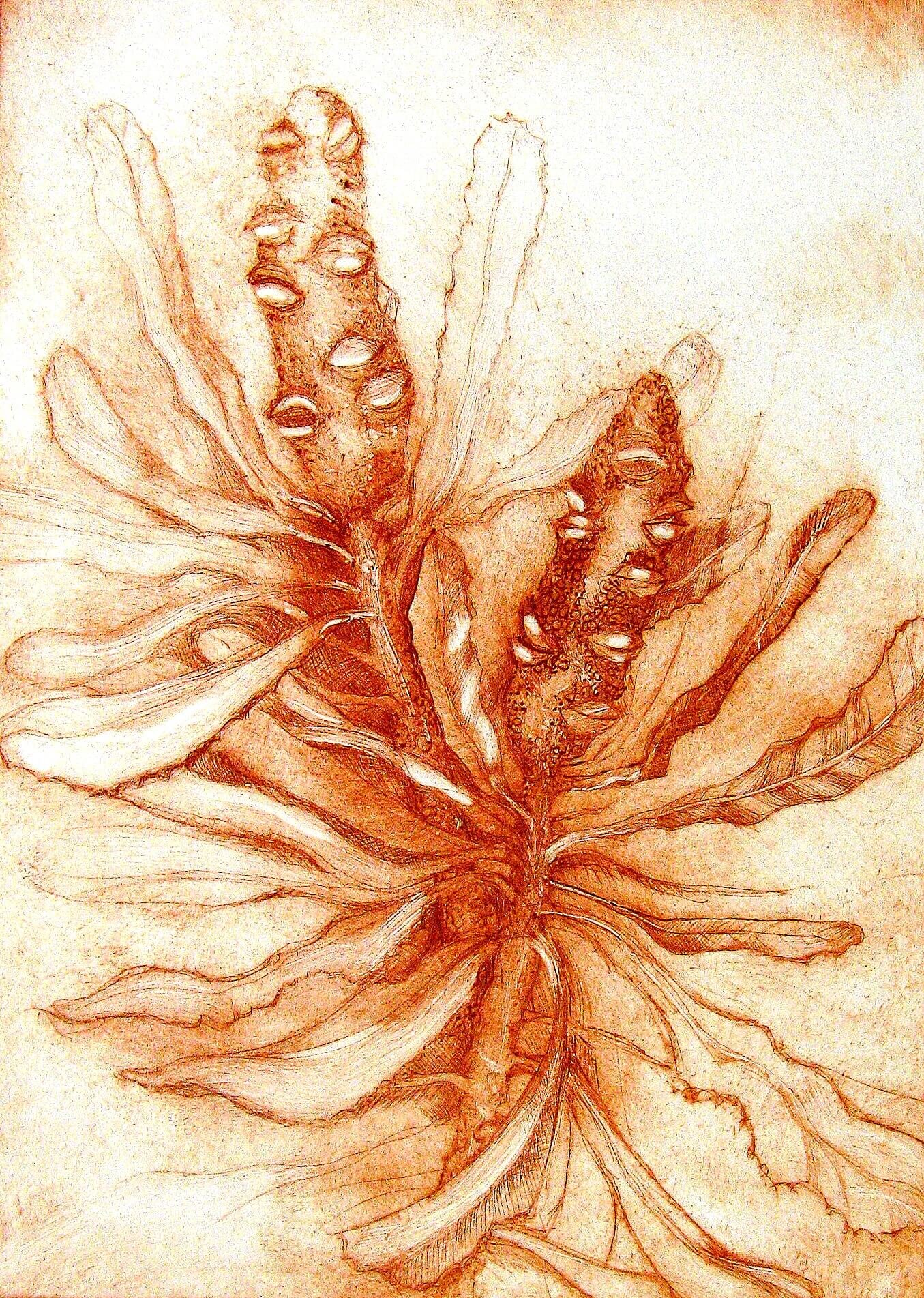
Jo Hollier, Artist and Printmaker

Jo Hollier, Artist and Printmaker

Jo Hollier, Artist and Printmaker

Jo Hollier, Artist and Printmaker
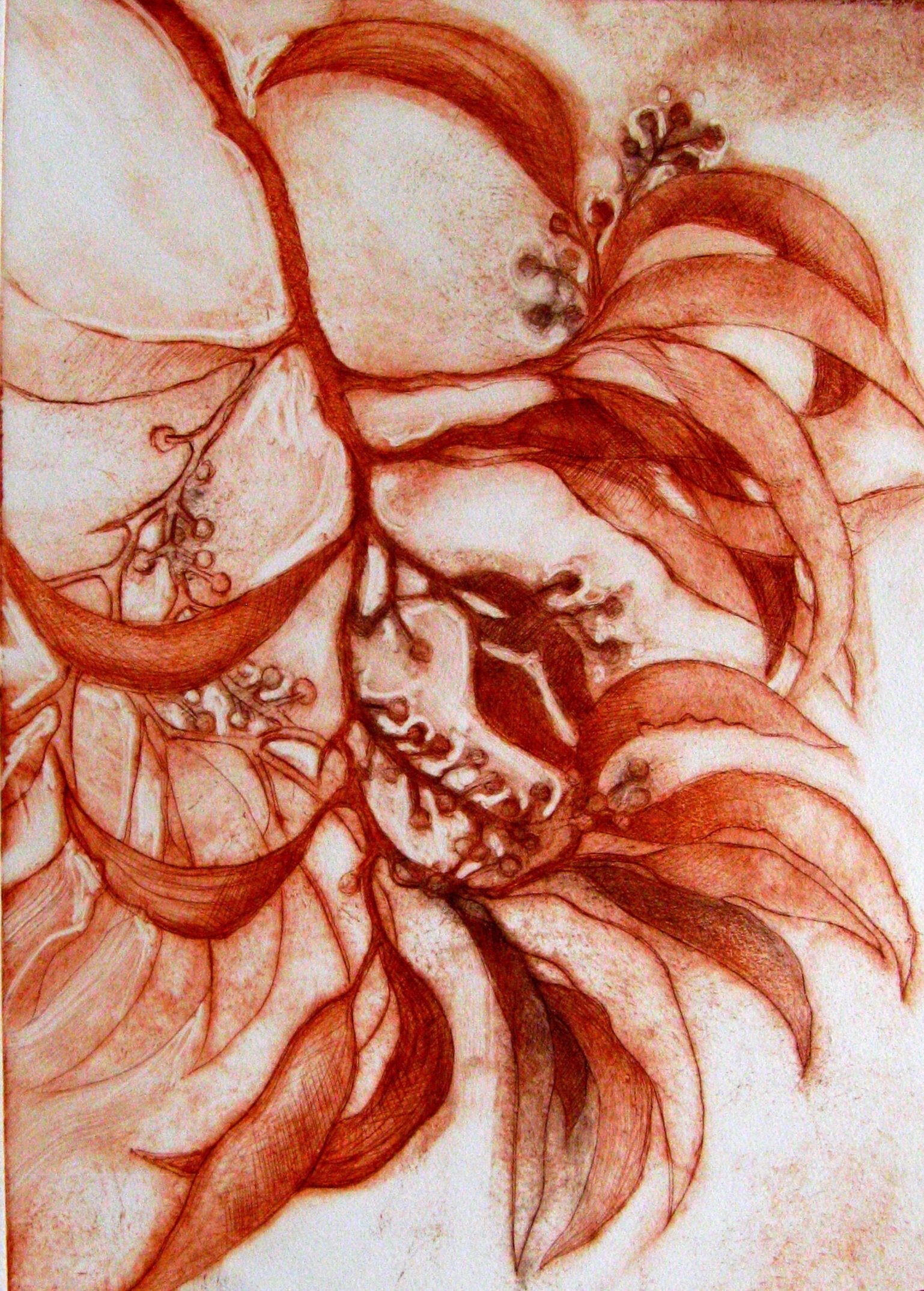
Jo Hollier, Artist and Printmaker

Jo Hollier, Artist and Printmaker

Jo Hollier, Artist and Printmaker

Jo Hollier, Artist and Printmaker

Jo Hollier, Artist and Printmaker
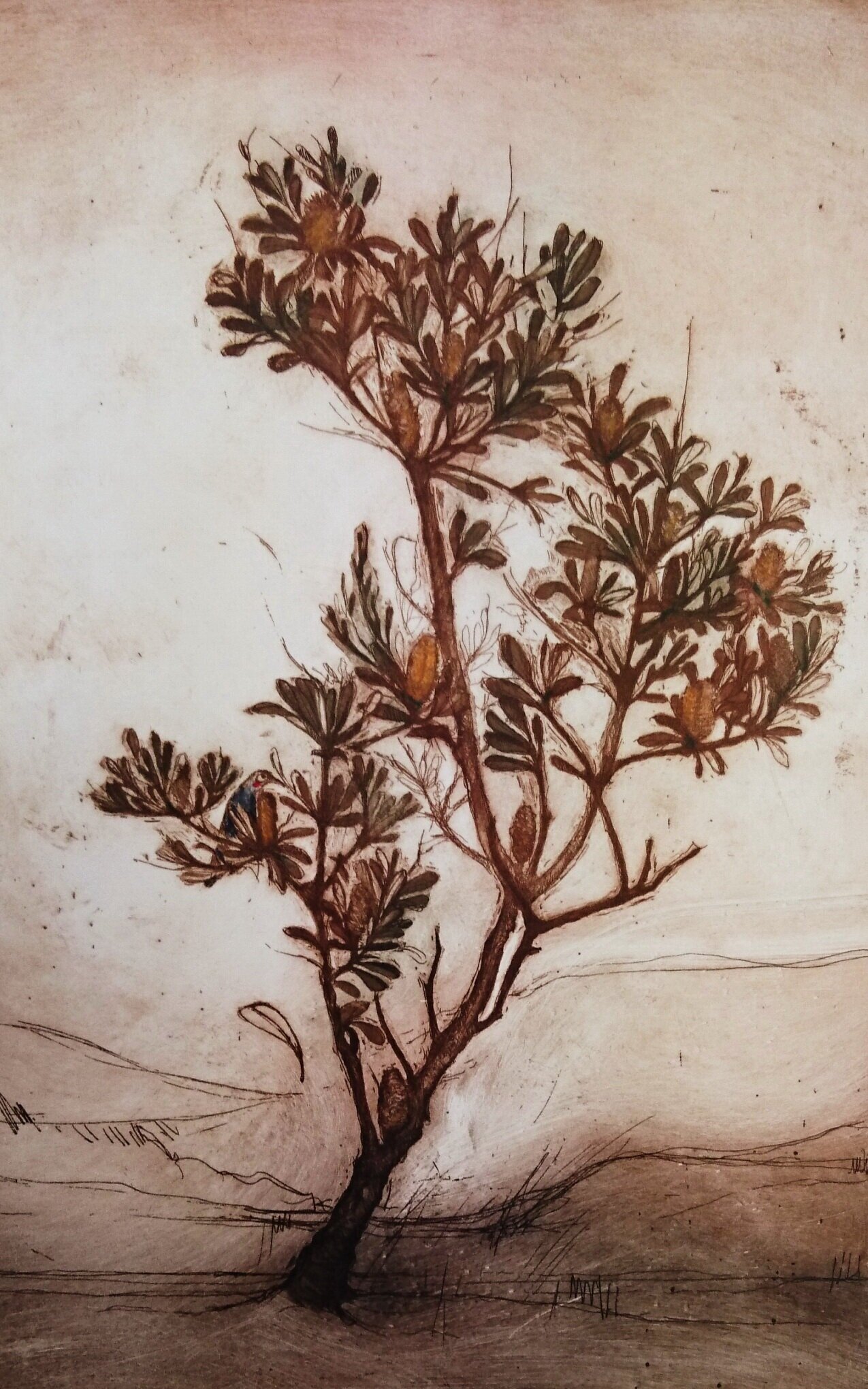
Jo Hollier, Artist and Printmaker
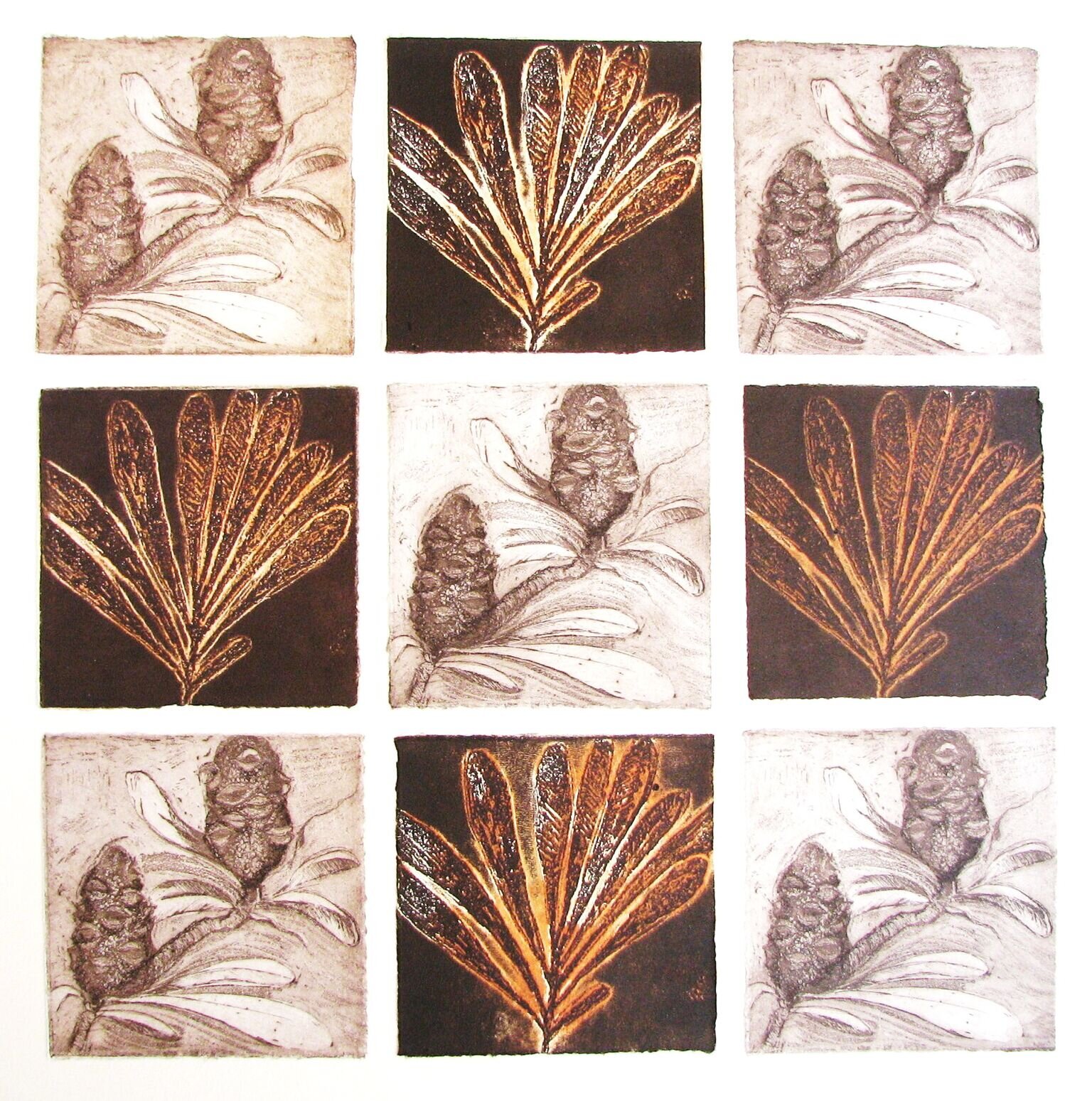
Jo Hollier, Artist and Printmaker
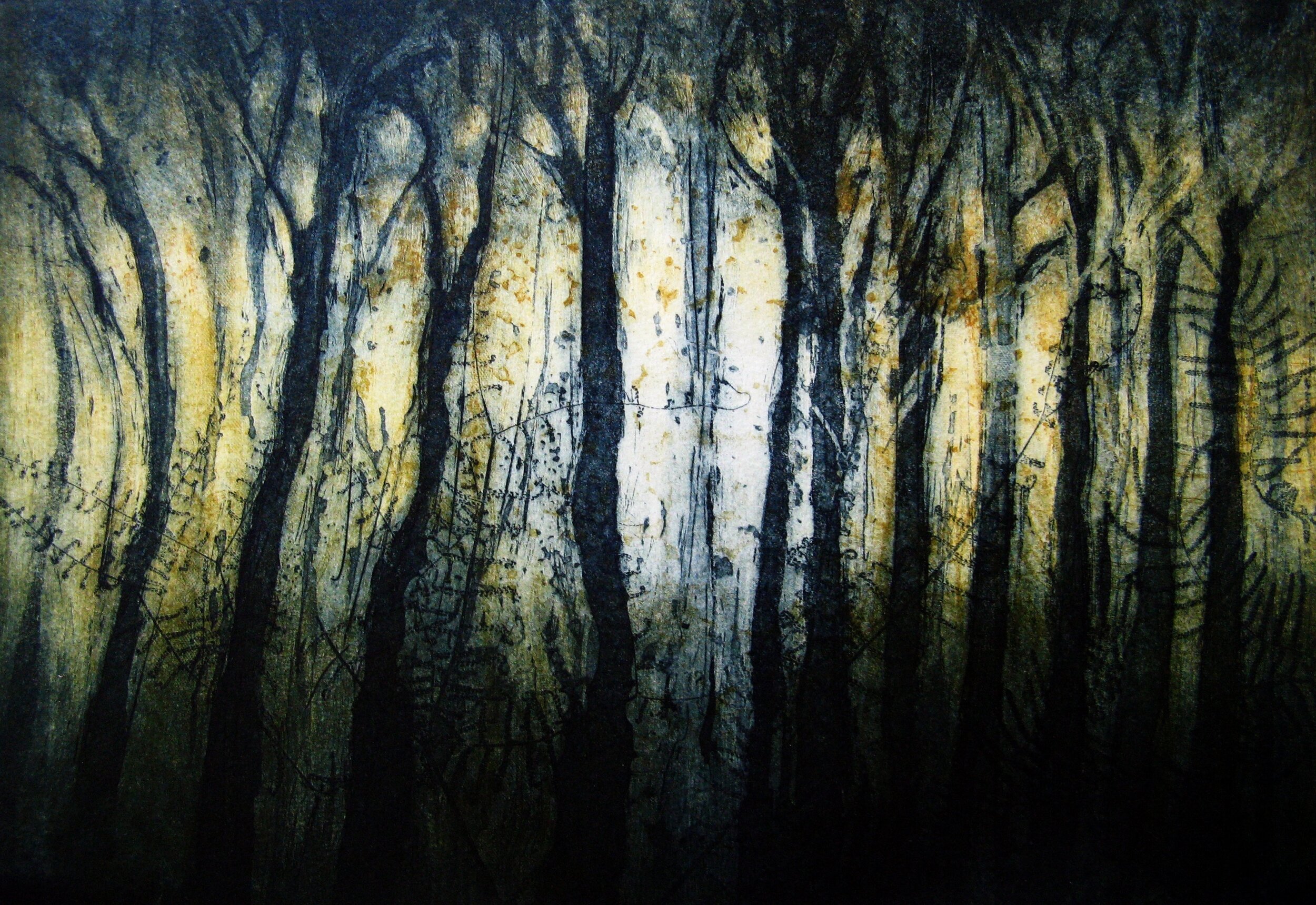
Jo Hollier, Artist and Printmaker

Jo Hollier, Artist and Printmaker




